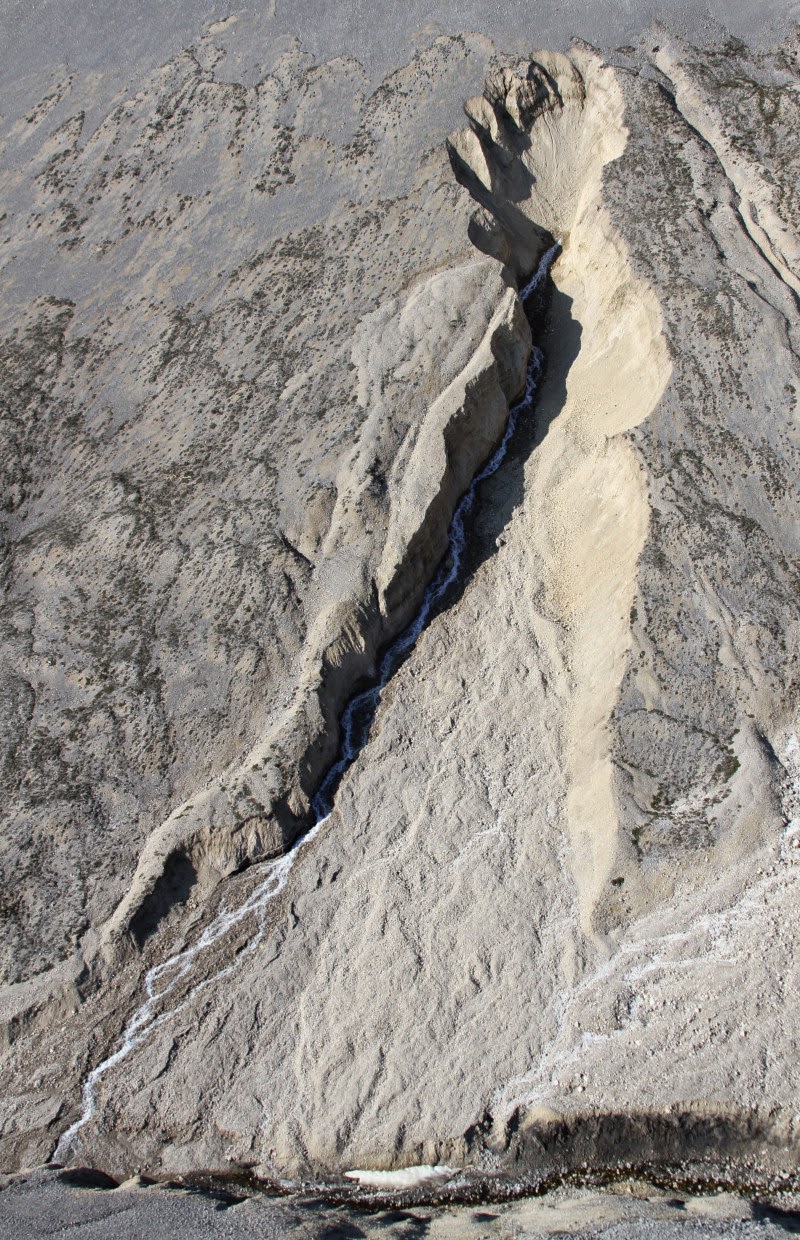
A Canadian team lead by Stephen Grasby reports the discovery of the highest latitude perennial spring known in the world. This high-volume spring demonstrates that deep groundwater circulation through the cryosphere occurs, and can form gullies in a region of extreme low temperatures and with morphology remarkably similar to those on Mars. The 2009 discovery raises many new questions because it remains uncertain how such a high-volume spring can originate in a polar desert environment.
Grasby and colleagues encountered the northernmost perennial spring in the world, which they have dubbed the Ice River Spring, on Ellesmere Island, Nunavut, Canadian High Arctic. The specific study area is north of Otto Fiord in a mountainous region underlain by carbonates of the Nansen Formation. The spring discharges at 300 m elevation from colluvium on a south-facing (21° incline) mountain slope. The unnamed mountain rises 800 m above sea level. Detailed recordings show that this spring flows year-round, even during 24 hours of darkness in the winter months, when air temperatures are as low as minus 50 degrees Celsius.
Detailed geochemistry shows that the waters originate from the surface and circulate down as deep as 3 km before returning through thick permafrost as a spring. This points to a much more active hydrogeological system in polar regions than previously thought possible, which is perhaps driven by glacial meltwater.
Another intriguing feature of the Ice River site is the remarkable similarity to mid-latitude gullies observed on Mars. The discovery of these features on Mars has led to suggestions that recent groundwater discharge has occurred from confined aquifers.
Note : The above story is based on materials provided by Geological Society of America.









